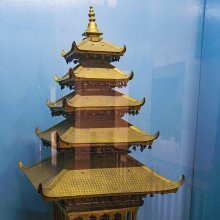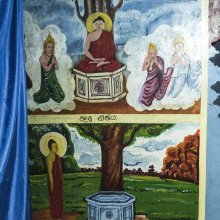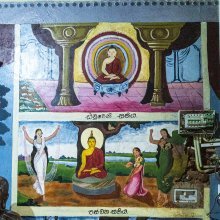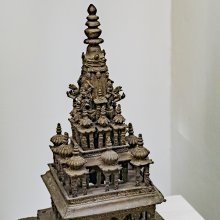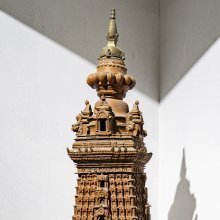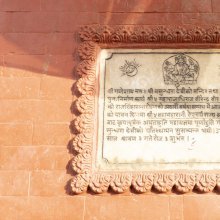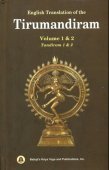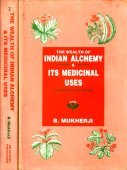Mandira, Mandirā, Mamdira: 24 definitions
Introduction:
Mandira means something in Hinduism, Sanskrit, Jainism, Prakrit, Buddhism, Pali, Marathi, biology. If you want to know the exact meaning, history, etymology or English translation of this term then check out the descriptions on this page. Add your comment or reference to a book if you want to contribute to this summary article.
Images (photo gallery)
(+4 more images available)
In Hinduism
Vastushastra (architecture)
Source: Wisdom Library: Vāstu-śāstra1) Mandira (मन्दिर) is a Sanskrit technical term denoting a “residence” in general, according to the lists of synonyms given in the Mayamata XIX.10-12, the Mānasāra XIX.108-12 and the Samarāṅgaṇa-sūtradhāra XVIII.8-9, all populair treatises on Vāstuśāstra literature.
2) Mandira (मन्दिर) refers to a “temple”, and in a broader sense represents “devotional place” or “residence of God”. It is one of commonly used names for a temple, as found in Vāstuśāstra literature such the Mayamata and the Mānasāra.
3)Mandira (मन्दिर) refers to a type of temple (prāsāda) classified under the group named Sāndhāra, according to Samarāṅgaṇasūtradhāra chapter 56. The Sāndhāra group contains twenty-five out of a sixty-four total prāsādas (temples) classified under four groups in this chapter. The Samarāṅgaṇasūtradhāra is an 11th-century encyclopedia dealing with various topics from the Vāstuśāstra.
Mandira is also listed in the Agnipurāṇa which features a list of 45 temple types. It is listed under the group named Puṣpaka, featuring rectangular-shaped temples. This list represents a classification of temples in Nort-India.
Source: OpenEdition books: Architectural terms contained in Ajitāgama and RauravāgamaMandira (मन्दिर) refers to “sanctuary (of Viṣṇu) §§ 4.2; 5.1, 18.”.—(For paragraphs cf. Les enseignements architecturaux de l'Ajitāgama et du Rauravāgama by Bruno Dagens)

Vastushastra (वास्तुशास्त्र, vāstuśāstra) refers to the ancient Indian science (shastra) of architecture (vastu), dealing with topics such architecture, sculpture, town-building, fort building and various other constructions. Vastu also deals with the philosophy of the architectural relation with the cosmic universe.
Purana and Itihasa (epic history)
Source: archive.org: Shiva Purana - English TranslationMandira (मन्दिर) or Ālaya refers to “one’s house”, according to the Śivapurāṇa 2.2.28. Accordingly as Śiva said to Satī:—“[...] O gentle lady, those who go to another man’s house (para-mandira) without being invited attain disrespect which is more serious than even death. Even the prosperous Indra and people like him going to another man’s house (para-ālaya) in such a context become worthless. What then about others? A journey of such a nature is futile”.

The Purana (पुराण, purāṇas) refers to Sanskrit literature preserving ancient India’s vast cultural history, including historical legends, religious ceremonies, various arts and sciences. The eighteen mahapuranas total over 400,000 shlokas (metrical couplets) and date to at least several centuries BCE.
Vaishnavism (Vaishava dharma)
Source: Pure Bhakti: Brhad BhagavatamrtamMandira (मन्दिर) refers to:—A temple. (cf. Glossary page from Śrī Bṛhad-bhāgavatāmṛta).

Vaishnava (वैष्णव, vaiṣṇava) or vaishnavism (vaiṣṇavism) represents a tradition of Hinduism worshipping Vishnu as the supreme Lord. Similar to the Shaktism and Shaivism traditions, Vaishnavism also developed as an individual movement, famous for its exposition of the dashavatara (‘ten avatars of Vishnu’).
Jyotisha (astronomy and astrology)
Source: Wisdom Library: Brihat Samhita by VarahamihiraMandira (मन्दिर) refers to a “room”, according to the Bṛhatsaṃhitā (chapter 4), an encyclopedic Sanskrit work written by Varāhamihira mainly focusing on the science of ancient Indian astronomy astronomy (Jyotiṣa).—Accordingly, “The moon (candra) is always below (nearer to the Earth than) the sun. It is spherical in shape. One half of it is always illumined by the light of the sun, while the other half is dark owing to its own shadow, just like a pot placed in the sun. The rays of the sun falling on the watery moon remove the darkness of the night (on Earth) just in the same way as light reflected from a mirror (placed in the sun) removes the darkness (from) within a room [i.e., mandira]”.

Jyotisha (ज्योतिष, jyotiṣa or jyotish) refers to ‘astronomy’ or “Vedic astrology” and represents the fifth of the six Vedangas (additional sciences to be studied along with the Vedas). Jyotisha concerns itself with the study and prediction of the movements of celestial bodies, in order to calculate the auspicious time for rituals and ceremonies.
Shaivism (Shaiva philosophy)
Source: Brill: Śaivism and the Tantric TraditionsMandira (मन्दिर) refers to a “sanctuary”, according to the 13th-century Matsyendrasaṃhitā: a Kubjikā-Tripurā oriented Tantric Yoga text of the Ṣaḍanvayaśāmbhava tradition from South India.—Accordingly, “[Visualisation of Parameśvara]:—In a hidden sanctuary (mandira—sugupte mandire), the mantra master should sit on a soft cushion and should visualise himself as having the body of Parameśvara, as if [he were transformed into] Kāmeśvara, having no beginning and no end, shining like millions of suns. [...] ”.

Shaiva (शैव, śaiva) or Shaivism (śaivism) represents a tradition of Hinduism worshiping Shiva as the supreme being. Closely related to Shaktism, Shaiva literature includes a range of scriptures, including Tantras, while the root of this tradition may be traced back to the ancient Vedas.
In Jainism
General definition (in Jainism)
Source: archive.org: Een Kritische Studie Van Svayambhūdeva’s PaümacariuMandira (मन्दिर) participated in the war between Rāma and Rāvaṇa, on the side of the latter, as mentioned in Svayambhūdeva’s Paumacariu (Padmacarita, Paumacariya or Rāmāyaṇapurāṇa) chapter 57ff. Svayambhū or Svayambhūdeva (8th or 9th century) was a Jain householder who probably lived in Karnataka. His work recounts the popular Rāma story as known from the older work Rāmāyaṇa (written by Vālmīki). Various chapters [mentioning Mandira] are dedicated to the humongous battle whose armies (known as akṣauhiṇīs) consisted of millions of soldiers, horses and elephants, etc.
Source: The University of Sydney: A study of the Twelve ReflectionsMandira (मन्दिर) refers to an “abode”, according to the 11th century Jñānārṇava, a treatise on Jain Yoga in roughly 2200 Sanskrit verses composed by Śubhacandra.—Accordingly, “O fool, sentient beings, having begun from the womb, are continually led by [their own] action to Yama’s abode (yama-mandira) by means of uninterrupted journeys. If there is a powerful [man], seen or heard about, who opposes the command of Yama, having honoured him you must possess health. [As there is] no such individual, why [make] the effort [for health] in vain?”.
Synonyms: Āspada, Gṛha, Geha, Nilaya, Sthāna.

Jainism is an Indian religion of Dharma whose doctrine revolves around harmlessness (ahimsa) towards every living being. The two major branches (Digambara and Svetambara) of Jainism stimulate self-control (or, shramana, ‘self-reliance’) and spiritual development through a path of peace for the soul to progess to the ultimate goal.
Biology (plants and animals)
Source: Google Books: CRC World Dictionary (Regional names)Mandira in India is the name of a plant defined with Echinochloa frumentacea in various botanical sources. This page contains potential references in Ayurveda, modern medicine, and other folk traditions or local practices It has the synonym Oplismenus frumentaceus (Roxb.) Kunth (among others).
Example references for further research on medicinal uses or toxicity (see latin names for full list):
· Bulletin agricole du Congo Belge (1919)
· A Systematic Catalogue of the Flowering Plants and Ferns in Ceylon (1885)
· Révision des Graminées (1829)
· Ceylon J. Sci., Biol. Sci. (1959)
· The Flora of the Malay Peninsula (1925)
· Grasses of Burma (1960)
If you are looking for specific details regarding Mandira, for example health benefits, side effects, pregnancy safety, chemical composition, extract dosage, diet and recipes, have a look at these references.

This sections includes definitions from the five kingdoms of living things: Animals, Plants, Fungi, Protists and Monera. It will include both the official binomial nomenclature (scientific names usually in Latin) as well as regional spellings and variants.
Languages of India and abroad
Pali-English dictionary
Source: BuddhaSasana: Concise Pali-English Dictionarymandira : (nt.) a mansion; a palace.
Source: Sutta: The Pali Text Society's Pali-English DictionaryMandira, (nt.) (cp. late Sk. mandira) a house, edifice, palace Sn. 996, 1012; J. V, 480; VI, 269, 270; Dāvs II. 67 (dhātu° shrine). (Page 523)

Pali is the language of the Tipiṭaka, which is the sacred canon of Theravāda Buddhism and contains much of the Buddha’s speech. Closeley related to Sanskrit, both languages are used interchangeably between religions.
Marathi-English dictionary
Source: DDSA: The Molesworth Marathi and English Dictionarymandira (मंदिर).—n (S) A house. rājamandira A palace. dēva- mandira A temple. hṛdayamandira The heart or bosom figuratively, the temple of the breast.
Source: DDSA: The Aryabhusan school dictionary, Marathi-Englishmandira (मंदिर).—n A house. rājamandira A palace dēvamandira A temple.
Marathi is an Indo-European language having over 70 million native speakers people in (predominantly) Maharashtra India. Marathi, like many other Indo-Aryan languages, evolved from early forms of Prakrit, which itself is a subset of Sanskrit, one of the most ancient languages of the world.
Sanskrit dictionary
Source: DDSA: The practical Sanskrit-English dictionaryMandira (मन्दिर).—[mandyate'tra mand kirac] A dwelling house, habitation, place, mansion; प्रावेशयन्मन्दिरमृद्धमेनम् (prāveśayanmandiramṛddhamenam) Kumārasambhava 7. 55; Bhaṭṭikāvya 8.96; R.12.83; मणिमयमन्दिरमध्ये पश्यति पिपीलिका छिद्रम् (maṇimayamandiramadhye paśyati pipīlikā chidram) Subhāṣ.
2) An abode, a dwelling in general; as in क्षीराब्धिमन्दिरः (kṣīrābdhimandiraḥ).
3) A town; विनिक्षिप्य बलं सर्वं बहिरन्तश्च मन्दिरे (vinikṣipya balaṃ sarvaṃ bahirantaśca mandire) Rām.6.12.3.
4) A camp.
5) A temple.
6) The body.
-raḥ 1 The sea.
2) The hollow of the knee, ham.
Derivable forms: mandiram (मन्दिरम्).
--- OR ---
Mandirā (मन्दिरा).—A stable.
Source: Cologne Digital Sanskrit Dictionaries: Shabda-Sagara Sanskrit-English DictionaryMandira (मन्दिर).—nf.
(-ra-rā) A house. n.
(-raṃ) 1. A town. 2. A temple. m.
(-raḥ) 1. The sea. 2. The back of the knee, the ham. 3. One of the Gandharbas. f.
(-rā) A stable. E. madi to sleep, &c. Unadi aff. kirac .
Source: Cologne Digital Sanskrit Dictionaries: Benfey Sanskrit-English DictionaryMandira (मन्दिर).—I. m. 1. The sea. 2. The back of the knee. Ii. f. rā, A stable. Iii. f. rā, and n. A house, [Hitopadeśa] ii. [distich] 126 (n.); a palace, [Vikramorvaśī, (ed. Bollensen.)] 35. 2; [Kathāsaritsāgara, (ed. Brockhaus.)] 26, 283 (f.). Iv. n. 1. A town. 2. A temple.
Source: Cologne Digital Sanskrit Dictionaries: Cappeller Sanskrit-English DictionaryMandira (मन्दिर).—[neuter] dwelling, house, castle, palace, temple.
Source: Cologne Digital Sanskrit Dictionaries: Monier-Williams Sanskrit-English Dictionary1) Mandira (मन्दिर):—[from mad] a n. any waiting or abiding-place, habitation, dwelling, house, palace, temple, town, camp etc. (ifc. dwelling in), [Mahābhārata; Kāvya literature] etc.
2) [v.s. ...] a stable for horses, [cf. Lexicographers, esp. such as amarasiṃha, halāyudha, hemacandra, etc.] (cf. mandurā)
3) [v.s. ...] the body, [cf. Lexicographers, esp. such as amarasiṃha, halāyudha, hemacandra, etc.]
4) [v.s. ...] m. the sea, [cf. Lexicographers, esp. such as amarasiṃha, halāyudha, hemacandra, etc.]
5) [v.s. ...] the hollow or back of the knee, [cf. Lexicographers, esp. such as amarasiṃha, halāyudha, hemacandra, etc.]
6) [v.s. ...] Name of a Gandharva, [cf. Lexicographers, esp. such as amarasiṃha, halāyudha, hemacandra, etc.]
7) b mandin etc. See above.
8) Mandīra (मन्दीर):—m. ([probably]) Name of a man, [Kātyāyana-śrauta-sūtra] ([varia lectio] maṅgīra)
9) n. [wrong reading] for mañjīra.
Source: Cologne Digital Sanskrit Dictionaries: Yates Sanskrit-English DictionaryMandira (मन्दिर):—[(raṃ-rā)] 1. n. f. A house. m. The sea; the ham. f. A stable n. A town; a temple.
Source: DDSA: Paia-sadda-mahannavo; a comprehensive Prakrit Hindi dictionary (S)Mandira (मन्दिर) in the Sanskrit language is related to the Prakrit word: Maṃdira.
[Sanskrit to German]
Sanskrit, also spelled संस्कृतम् (saṃskṛtam), is an ancient language of India commonly seen as the grandmother of the Indo-European language family (even English!). Closely allied with Prakrit and Pali, Sanskrit is more exhaustive in both grammar and terms and has the most extensive collection of literature in the world, greatly surpassing its sister-languages Greek and Latin.
Prakrit-English dictionary
Source: DDSA: Paia-sadda-mahannavo; a comprehensive Prakrit Hindi dictionary1) Maṃdira (मंदिर) in the Prakrit language is related to the Sanskrit word: Mandira.
2) Maṃdira (मंदिर) also relates to the Sanskrit word: Māndira.
Prakrit is an ancient language closely associated with both Pali and Sanskrit. Jain literature is often composed in this language or sub-dialects, such as the Agamas and their commentaries which are written in Ardhamagadhi and Maharashtri Prakrit. The earliest extant texts can be dated to as early as the 4th century BCE although core portions might be older.
Kannada-English dictionary
Source: Alar: Kannada-English corpusMaṃdira (ಮಂದಿರ):—
1) [noun] a building where normally a person or a family dwells; a house.
2) [noun] a social unit consisting of parents and the children they rear; a family.
3) [noun] a building for the worship of a divinity or divinities; a temple.
4) [noun] a town or city.
5) [noun] a building in which horses are sheltered and fed; a stable.
6) [noun] a sea or ocean.
7) [noun] the physical human body.
Kannada is a Dravidian language (as opposed to the Indo-European language family) mainly spoken in the southwestern region of India.
See also (Relevant definitions)
Starts with: Mamdirambogu, Mandiramalin, Mandiramani, Mandiranirmana, Mandirapashu, Mandirava.
Ends with (+68): Adhyayanamamdira, Amayamamdira, Amedhyamandira, Anarthamandira, Angamandira, Antarmandira, Arnavamandira, Aruhamamdira, Avahkaramandira, Avaskaramandira, Balamandira, Balimandira, Brahmamandira, Caityamandira, Chaityamandira, Citramamdira, Devamamdira, Devatamandira, Gomandira, Harimandira.
Full-text (+73): Mandirapashu, Smaramandira, Jivamandira, Balimandira, Pitrimandira, Vilasamandira, Ratimandira, Arnavamandira, Pratimandiram, Nripamandira, Mangira, Kelimandira, Mandiramani, Suramandira, Avaskaramandira, Indiramandira, Shri-mandira, Mamdira, Shvabhriy, Kalyanamandiratika.
Relevant text
Search found 42 books and stories containing Mandira, Mamdira, Maṃdira, Mandirā, Mandīra, Māndira; (plurals include: Mandiras, Mamdiras, Maṃdiras, Mandirās, Mandīras, Māndiras). You can also click to the full overview containing English textual excerpts. Below are direct links for the most relevant articles:
Chaitanya Bhagavata (by Bhumipati Dāsa)
Verse 3.4.458 < [Chapter 4 - Descriptions of Śrī Acyutānanda’s Pastimes and the Worship of Śrī Mādhavendra]
Verse 2.9.126 < [Chapter 9 - The Lord’s Twenty-One Hour Ecstasy and Descriptions of Śrīdhara and Other Devotees’ Characteristics]
Verse 2.8.188 < [Chapter 8 - The Manifestation of Opulences]
Garga Samhita (English) (by Danavir Goswami)
Verse 1.17.18 < [Chapter 17 - Description of the Yogurt Theft]
Verse 6.21.30 < [Chapter 21 - In the Description of the Third Fort, the Glories of Piṇḍāraka-tīrtha]
Verse 5.4.3 < [Chapter 4 - The Journey to Śrī Mathurā]
Brihad Bhagavatamrita (commentary) (by Śrī Śrīmad Bhaktivedānta Nārāyana Gosvāmī Mahārāja)
Verse 2.1.174-175 < [Chapter 1 - Vairāgya (renunciation)]
Verse 2.1.194-195 < [Chapter 1 - Vairāgya (renunciation)]
The Agni Purana (by N. Gangadharan)
Chapter 357 - Adding primary affixes known as uṇādi
Chapter 104 - General characteristic of a Divine Edifice (prāsāda-lakṣaṇa)
Kashyapa Shilpa-shastra (study) (by K. Vidyuta)
3. Temple Architecture (Prāsāda or Vimānā) < [Chapter 1 - Introduction]
Prasthanatrayi Swaminarayan Bhashyam (Study) (by Sadhu Gyanananddas)
4.8. Basic Philosophy of Svāminārāyaṇa < [Chapter 1 - Introduction]
4.5. Women’s Upliftment < [Chapter 1 - Introduction]
Related products
